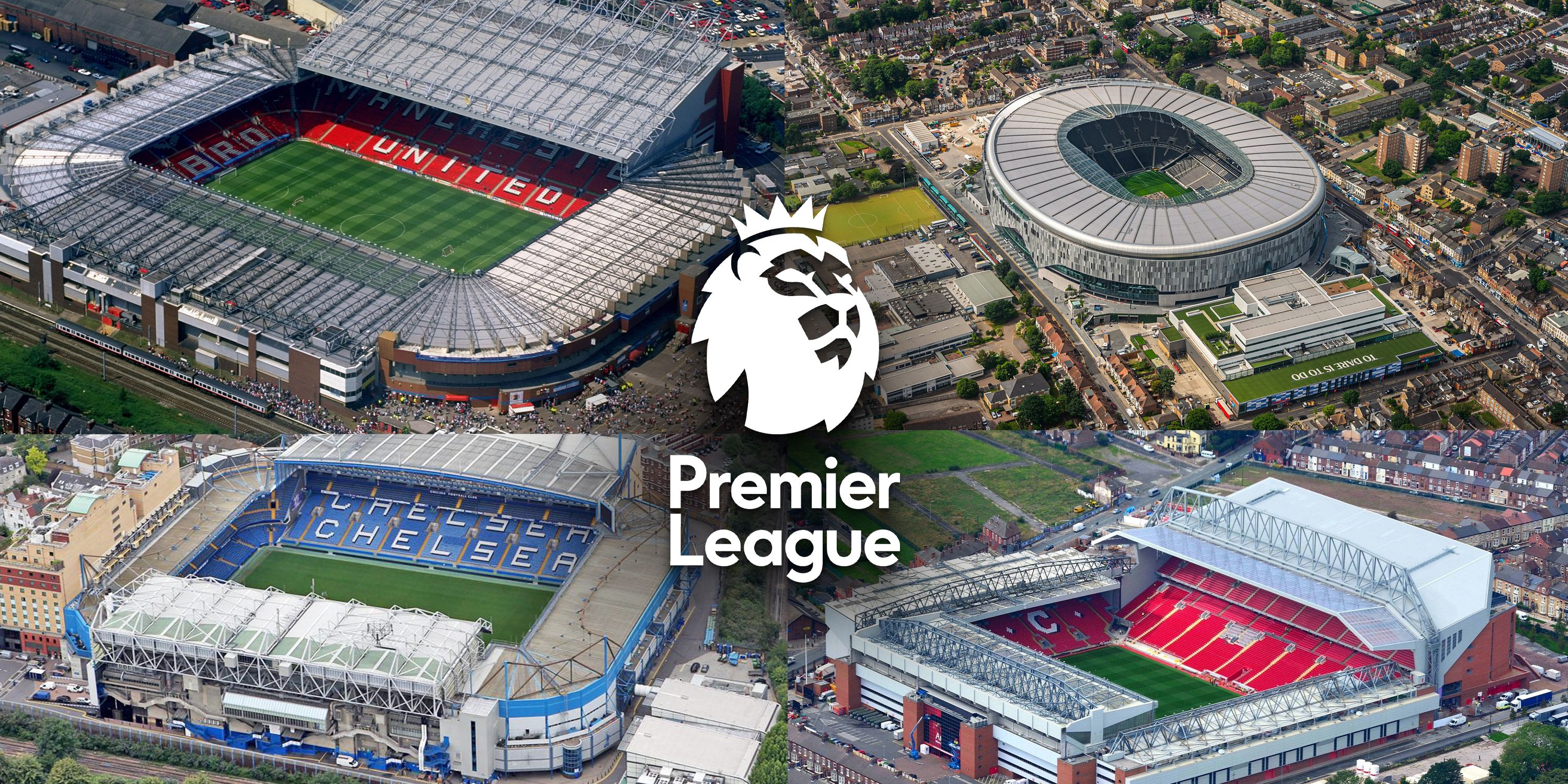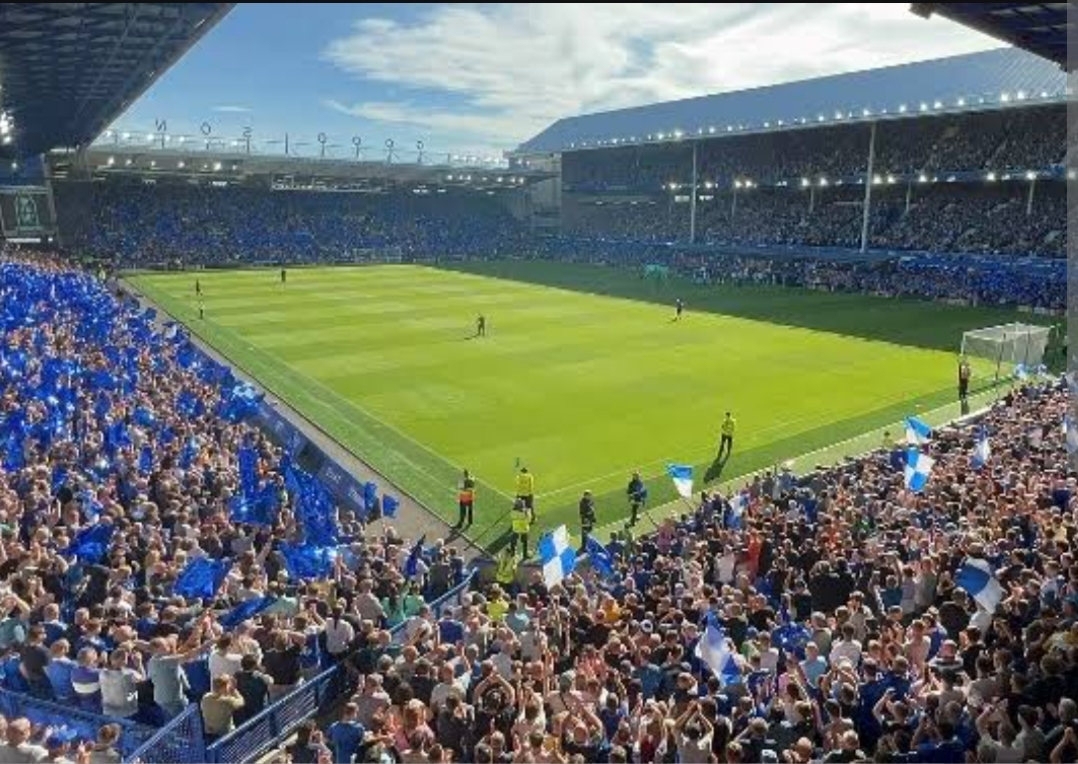Since 1992, when the transition from Division One to the Premier League was ratified, there have been plenty of iconic stadiums that have come and gone. But when picking and choosing between the greatest to ever feature in the Premier League, there is plenty to chew over. Are they distinctive in appearance? How well is it designed? Is it steeped in history?
To put it very simply, there are very few eyesores in the upper echelons of English football. But using the ranking factors (which can be found below), GIVEMESPORT have decided to name and rank the top 10 stadia in the long and storied history of the Premier League – from Manchester United’s esteemed Old Trafford to Elland Road, the home of Leeds United.
Ranking Factors
- History
- Longevity
- Atmosphere
- Capacity
- Design
- Location
- Recognition
1 Old Trafford
Manchester United
Home to one of the biggest clubs in England – if not the world – Old Trafford has stood tall ever since opening its doors as early as 1910. Manchester United, albeit no longer, were admired as the dominant force in English football – and the resulting boom in financial gain allowed it to balloon to its current size.
The sad state of the Theatre of Dreams may be completely different in 2024, but there are many aspects that simply cannot be overlooked: its history, idiosyncratic persona and the abundance of talent that have called it home over the years.
From Matt Busby’s football to the peak of the Sir Alex Ferguson-inspired dynasty, there are few stadiums in world football that can claim to have surpassed – or, for that matter, even matched – the lofty history of the 13-time Premier League champion’s precious Old Trafford.
Arsenal
Long before Arsenal fans called the flashy Emirates Stadium their home, it was within the four walls of Highbury when Arsene Wenger‘s sexy football was in full flow. Fuss aplenty was made of the north Londoner’s move from Highbury, given that it is entirely steeped in history and complemented with stories to tell the grandchildren.
While it may no longer be on par with the state-of-the-art arenas of the modern day, Arsenal’s former stomping ground was small (in comparison to the stadiums that top tier outfits reside in to this day), but don’t let that cloud over its colourful personality.
Distinctive from outside and overwhelmingly powerful from within, Highbury exuded a certain feeling: authenticity. It will always be fondly looked back on as Arsenal’s true home ground – and one that was induced goosebumps as soon as it was within eyeshot.
3 Anfield
Liverpool
Recognised as one of the most atmospheric grounds in British football, the revered arena – situated on the edge of Stanley Park, Merseyside – has become renowned for its ferocity on matchday even when the results have not been up to scratch.
Typically, though, supporters who visit the 61,276-strong stadium on a regular basis have borne witness to an attractive brand of football – apart from the first seven years when it played host to their noisy neighbours, Everton.
4 St James’ Park
Newcastle United
Since over a century ago, fans have turned out in their droves to watch the Magpies in action on a bi-weekly basis. Sat on a hill in the epicentre of the football-crazed city, which has established its sense of importance, its lopsided nature is thanks to the vast redevelopment of two stands in 1998.
In a way, that enhances its character: it almost looks cold and aloof. Ranked as one of the best stadiums in the Premier League at the time of writing, there’s no doubt that Newcastle’s cauldron encapsulates the old adage of being ‘not an easy place to visit’ – but that adds to its all-round beauty.
5 Villa Park
Aston Villa

Related
Every Premier League Stadium Ranked From Best to Worst
Every Premier League stadium for the 2024-25 season has been ranked – including Portman Road, King Power Stadium and St Mary’s.
6 Stamford Bridge
Chelsea
Chelsea are part of the Premier League furniture, so it’s only right that Stamford Bridge also receives its well-deserved flowers. The Blues faithful hold plenty of happy memories at the 40,341-seater facility – with their trophy cabinet packed to the brim with silverware from Champions League crowns to Premier League titles.
Silverware and success aside, the personal touches such as ex-Chelsea forward Peter Osgood’s ashes being buried under the penalty spot at the Shed End is what makes the historic ground such a special entity of Premier League football.
7 White Hart Lane
Tottenham Hotspur
Serving as the iconic home of the north Londoners over a 118-year period, White Hart Lane – admired by Steven Gerrard and Frank Lampard as their favourite Premier League ground of all time – is synonymous with the apex of the Barclays era, as the likes of Jermain Defoe, Peter Crouch and Robbie Keane were terrorising defences in front of their loyal fanbase.
8 Goodison Park
Everton
Despite being in need of a major face lift, hence the club’s decision to relocate, Everton’s current home ground oozes character and their three-tiered Main Stand remains as striking as they come. That said, it is the Gwladys Street Stand that provides the optimal Goodison Park experience.
The Goodison Park era is soon to come to an end with the Bramley-Moore Dock Stadium – located in Vauxhall, Liverpool – set to become their new home in due course. Whether their new and shiny build will prove able to usurp their current home remains to be seen, but it’ll certainly take some doing.
West Ham United
Many West Ham United supporters have bemoaned the tradition and character – or evident lack thereof – of the London Stadium since leaving the Boleyn Ground era long behind them. There was such a classically ornate feeling around the latter, one that fans lapped up every time they stepped foot within a five-mile radius of the 35,016-seater.

Related
10 Most Intimidating Stadiums in British Football History [Ranked]
From the iconic Upton Park to the world famous Anfield, here are the most intimidating stadiums in British football history.
Located in the capital, the Hammers – who were crowned Europa Conference League champions in 2022/23 – tipped up to their old stadium between 1904 and 2016 and although it was well-trodden and, as a result, replaced – its presence will always be fondly looked back on.
10 Elland Road
Leeds United
When Elland Road is rocking, the whole of Yorkshire feels the resultant wrath – as evidenced by wide man Largie Ramazani’s description of the stadium, built in 1897 and occupied by Leeds since 1919. Simply, he said it’s ‘louder than the Santiago Bernabeu’ and that’s most likely helped by the in excess of 35,000 supporters who turn up to spur on the Whites when they play at home – and that often makes all the difference.








